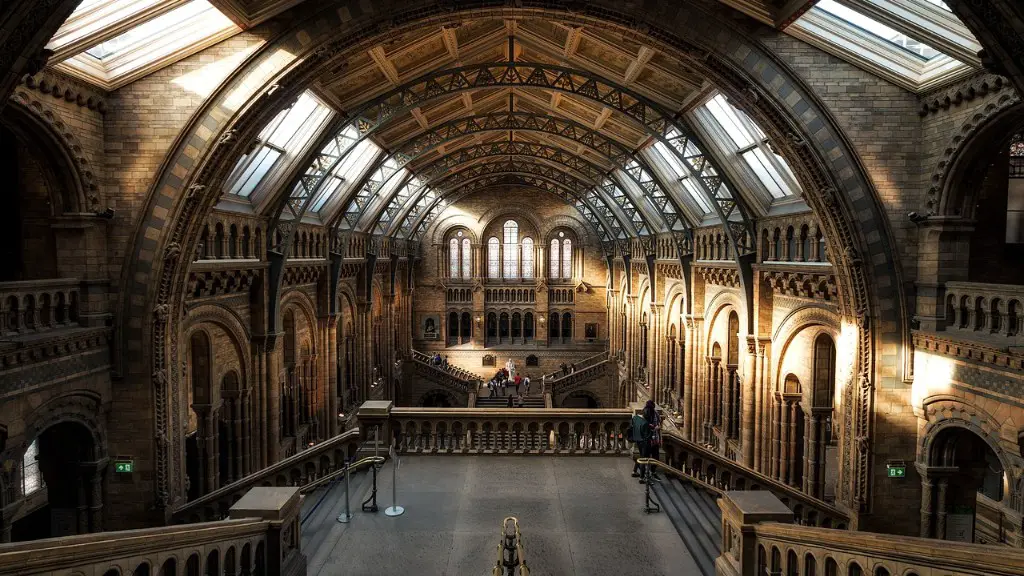Why Do We Study Architecture?
Many may not think of architecture as an academic subject and may consider it to be beyond the realm of education. But the fact is, architecture and design are vital components in our civil society, and they are one of the cornerstone disciplines in many educational curriculums. It is an area of study that requires a combination of artistic skill and practical knowledge, and those with the right combination of talents can succeed and be quite successful in the field.
Architects are responsible for designing and building structures, which go on to become something much larger and more impactful than a simple dwelling from wood and nails. Architects create the foundation and replicable templates for homes, apartments, high rises and other structures, so the importance of this profession in many countries cannot be ignored.
In the past, the study of architecture has focused mainly on the form and appearance of a structure, but this has changed dramatically in recent decades. The focus has now shifted to sustainability and the environment in every major project. Architects must now understand the process of engineering and city planning and work to design energy efficient buildings that minimize their environmental impact. For this reason, studying architecture requires a comprehensive understanding of science, physics and technology.
Architecture also plays a vital role in the economy of a modern city. As cities become ever more complex, the need for smart planning and sustainable building increase, and the importance of qualified architects in this formation process cannot be understated. As the population of cities continues to rise, architects are working with city planners to develop new ways of living within the available space. Not only do these structures provide necessary housing, but they also become a part of the public infrastructure and identity of a city.
Studying architecture is not just about the technical knowledge of building structures, but also about learning how to approach and analyse a situation, then use the available resources to create and implement a solution. Individuals with an architecture degree also learn how to work with a number of different government agencies as well as private organizations, to ensure the building process is successful and beneficial for all involved.
Moreover, it encourages and instills creativity, imagination and curiosity into aspiring architects, creating the foundations of the ‘design thinker’ and providing them with the insight and resources to explore and create. Architects are not just expected to design aesthetically pleasing buildings but to consider unconventional ideas, and come up with innovative ways of using materials and creating living spaces.
Analytical Thinking
Studying architecture teaches students how to look at an issue or problem from every angle, drawing on all fields of study and experience to develop unique solutions. Individuals must learn to assess projects critically and garner on-the-fly solutions to an ever-evolving array of potential problems. To develop the ability to look outside the box for solutions, students must let go of traditional preconceptions, becoming the kind of open-minded professionals who can think at the intersections of disciplines.
Architects must go beyond the traditional boundaries of their discipline to create something truly innovative and inspiring. The ability to take a holistic approach to design develops an awareness of sometimes overlooked details. The eye for detail, honed by the study of architecture, helps facilitate a better understanding of the small intricacies that can make all the difference in the overall outcome of a project.
Being able to think through a problem and identify potential issues in advance allows architects to anticipate and adjust their plans. This is especially important when it comes to working on large-scale projects. Experienced architects know how to recognize the subtle details that come with creating a structure, right down to the individual pieces of lumber or steel.
The study of architecture also requires an in-depth understanding of mathematics, science, and physics. When building something of a large scale, architects must familiarize themselves with the forces of nature and the principles of physics that come into play. This enables architects to assess the practicality of their designs and better anticipate the consequences of their work.
Building Methods and Materials
Aside from the technical components of architectural designs, students must also gain an in-depth understanding of the materials and tools available to them. Architects must learn how to use their tools and materials to create something unique and lifelong. Most importantly, architects must be aware of best practices when it comes to construction.
Knowing the best way to implement the design is just as important as the design itself. Knowing the right materials to use, the most efficient tools and methods, and the best ways to work with a variety of governments and companies to come up with a plan that benefits everyone involved is essential.
Architects must be cognizant of the cost of materials and of labour, as well as other potential costs associated with the project. By having a comprehensive understanding of their materials and of the construction process, architects are in a better position to anticipate potential problems, and come up with cost-effective solutions to these issues.
To be a successful architect, the individual must possess an understanding of the full range of resources, materials, and techniques available to them. This in turn provides the architect with the ability to execute projects quickly, while still managing to produce something that is aesthetically pleasing and of high quality.
Creative Thinking
Creative thinking is arguably the most important skill that an architect must possess. Thinking outside the box, seeing past the boundaries of the traditional and coming up with something unique and imaginative is what sets one type of building apart from another. It is the ability to see clearly even when the situation seems complex and the demands constantly changing that keeps architects on top of their game.
Having a discerning eye for all aspects of design, including use of colour and pattern, balancing of angles and lines, and understanding of the use of lighting, are all essential components of a successful and creative mind. An eye for detail and ability to focus on the seemingly-insignificant aspects of a project are key components of why the study of architecture is so important.
Architects must develop an intimate understanding of their own ideas and the potential for their works to be further developed into something larger and more complex. This encourages the development of a deep passion and enthusiasm within the study of architecture and fosters the next generation of architects, who will have the experience and resources to mould the architectural and built environment of the future.
Flexibility and Adaptability
Due to the nature of their jobs, architects must be able to demonstrate both flexibility and adaptability. Conservation and preservation of historical buildings are becoming increasingly important, so the ability to work within the tight parameters set by city planners and other governmental organizations requires the utmost level of strategy, creativity and professionalism.
Exploring the possibilities of existing structures and finding potential for development is a job for a highly-skilled architect with the ability to see outside the box. This also entails an understanding of building codes and regulations and the skills to manage multiple projects from conception to fruition. In other words, an architect must remain both flexible and adaptive to the changing environment of their work.
There is never a one-size-fits-all solution when it comes to architecture, so the ability to take a flexible and adaptable approach to design challenges is essential. Discretion and judgement come together to help an architect achieve success, regardless of the situation.
Understanding and Empathy
Finally, the study of architecture requires individuals to develop empathy and understanding. Architects may not just be designing a structure when they create a plan, they may be changing the way a community interacts or the landscape of an area. Thus, it is vital that architects consider the various implications of their work. This includes the effects on the environment, the people who will occupy the space and the policies with which the architect must comply.
An understanding of the local culture and the importance of taking into account the needs and opinions of the people in a given area is essential to developing projects that will stand the test of time. This kind of empathy and insight cannot be gained from a textbook, but is a skill that must come from experience and observation of the human experience.
An architect must understand how their works will effect the way people use and interact with the built environment, and it is this understanding and empathy that will help architects to create works that are both practical and aesthetically pleasing. Simultaneously respecting the culture and values of the local population, whilst still trying to push the boundaries of modern architecture.





